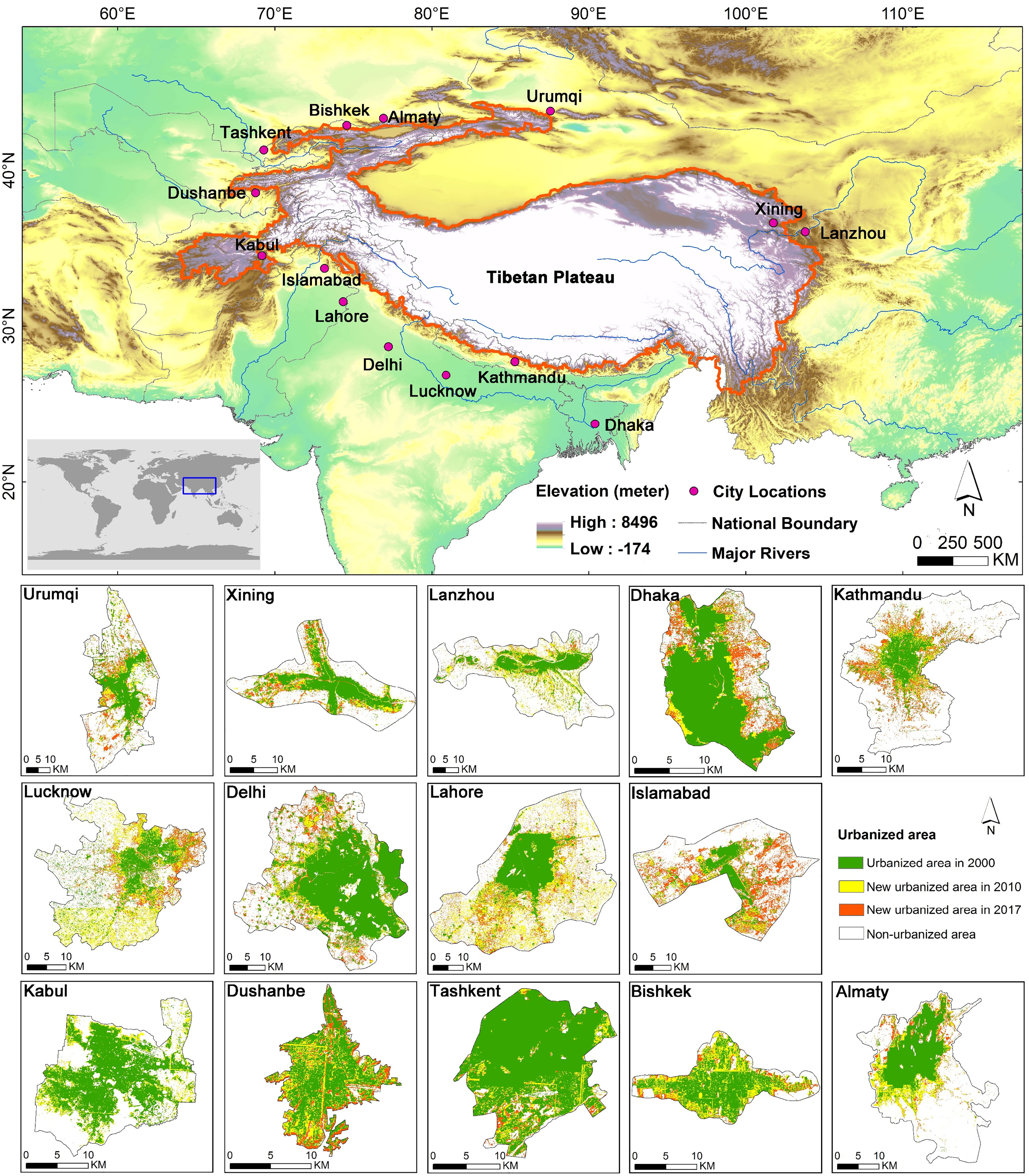-
Rapid Urbanization of the Pan-Third Pole Cities
The cities in the Pan-Third Pole region are mostly located in the arid-semi-arid region of the Tibetan Plateau and its surroundings, which has undergone rapid urbanization since 2000 and is more susceptible to ecological problems caused by urbanization due to its higher elevation and sensitivity to environmental changes, thus it is important to accurately identify the urbanization rate and its driving mechanism to provide valuable information for future urban development. However there is a lack of more reliable land-cover data for arid regions and even less complete research on major Pan-Third Pole urban expansions and their driving mechanism.
Recently, Prof. LI Xin at the National Tibetan Plateau Data Center, Institute of Tibetan Plateau Research, Chinese Academy of Sciences (CAS) and the CAS Center for Excellence in Tibetan Plateau Earth Sciences, CAS, and LUAN Wenfei, a PhD student at the Northwest Institute of Eco-Environment and Resources, CAS, develop high-resolution urban land cover data for 14 major Pan-Third Pole cities based on the interpretation of historical Google Earth imagery using deep learning techniques. The selected cities are national or provincial capitals with large and fast-growing population bases in China (Urumqi, Xining, Lanzhou), Bangladesh (Dhaka), Nepal (Kathmandu), India (Lucknow, Delhi), Pakistan (Lahore, Islamabad), Afghanistan (Kabul), Tajikistan (Dushanbe), Uzbekistan (Tashkent), Kyrgyzstan (Bishkek), and Kazakhstan (Almaty). They find that these Pan-Third Pole cities have experienced a relatively rapid expansion over the past 18 years, with an average annual growth rate of nearly 3% in urban area, and that more than 90% of the urban expansion is due to the occupation of cropland and vegetation. The analysis reveals a significant positive correlation between rapid population growth, road construction and the expansion process of most Pan-Third Pole cities. Elevation is a major constraint to urban expansion due to the difficulty of converting high altitude areas into built-up land.
The rapid urban expansion has resulted in an increase in the population of slums in the Pan-Third Pole cities, and has also increased the pressure on the future water supply in this region. As these cities will continue to face the problems of population growth and urban expansion in the coming decades, the social and natural environment impact brought by urbanization deserves continuous attention.
The paper provides 30-meter resolution land cover data for major Pan-Third Pole cities, which can provide basic data support for the urban sustainable development research. The dataset has been shared at the National Tibetan Plateau Data Center.
The introductory paper of this research was published by Prof. LI Xin (correspondent author) and LUAN Wenfei (first author), in Science of the Total Environment, entitled as “Rapid urbanization and its driving mechanism in the Pan-Third pole region”. The research was supported by the Strategic Priority Research Program of the Chinese Academy of Sciences (Grant No. XDA20100104) and the National Natural Science Foundation of China (Grant No. 41730642).
Data available at:
https://data.tpdc.ac.cn/en/data/e44134e9-17d3-4b7f-abd8-c03c6280faaa/
Full-text available at:
https://www.sciencedirect.com/science/article/pii/S0048969720347999

Urban expansion of major cities in the Pan-Third Pole region during the 2000–2017 period.

 Copyright ©right; 2017 - 中国科学院西北生态环境资源研究院 - 兰州数云软件科技有限公司提供技术支持
Copyright ©right; 2017 - 中国科学院西北生态环境资源研究院 - 兰州数云软件科技有限公司提供技术支持